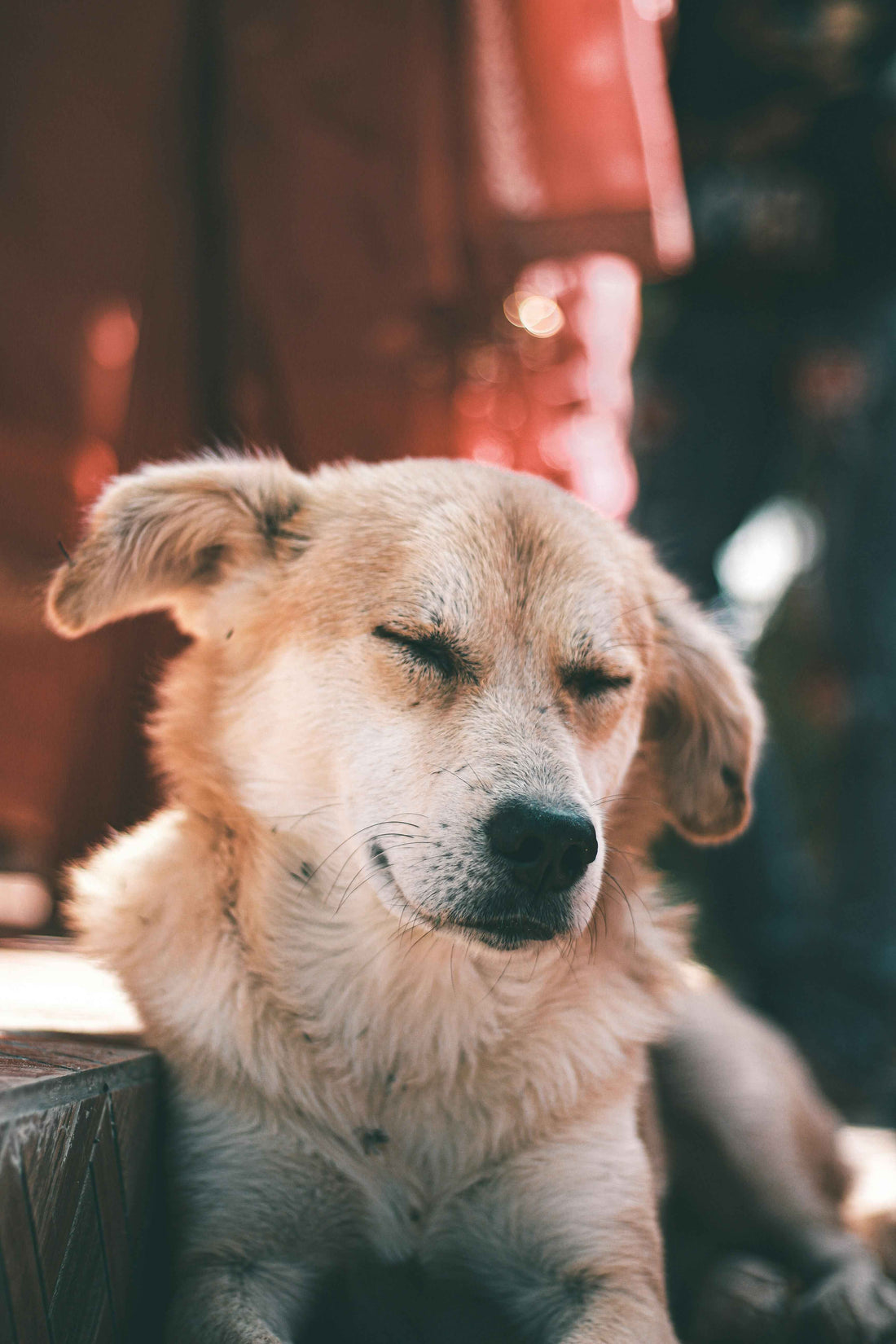
5 Signs Your Dog Might Be Stressed — And Natural Ways to Help Them Feel Calmer
Share

Just like us, dogs feel stress. But unlike us, they can’t tell you what’s wrong with words — only with behavior.
Whether it's fireworks, being left alone, or new environments, stress can affect your dog’s health, happiness, and behavior. The good news? You don’t need prescription meds or harsh chemicals to help your pup feel better.
Here are 5 of the most common signs your dog may be stressed, plus gentle, natural solutions to help them feel safe and calm again.
1. Pacing or Restlessness

A dog that can't sit still might be dealing with anxiety. Pacing is often a response to internal stress—especially during storms or when they’re anticipating being left alone.
Try This:
- Provide a quiet, cozy space with a soft blanket or crate
- Use calming music (YouTube has dog-calming playlists)
- Offer a Dr. Paul’s Calming Chew 30 minutes before a stressful event.
2. Excessive Barking or Whining
 While barking is normal, sudden increases—especially at night or when you leave the room—can signal emotional distress.
While barking is normal, sudden increases—especially at night or when you leave the room—can signal emotional distress.
Dogs might bark due to:
- Separation anxiety
- Boredom
- Fear or uncertainty
Try This:
- Leave a piece of worn clothing with your scent when you go out
- Increase mental stimulation with puzzle toys
- Introduce calming herbs like Chamomile and Hemp Extract found in Dr. Paul’s Calming Chews
3. Destructive Behavior (Chewing, Digging)
 Chewing your shoes, scratching doors, or digging into furniture can all be coping behaviors for dogs dealing with stress or separation issues.
Chewing your shoes, scratching doors, or digging into furniture can all be coping behaviors for dogs dealing with stress or separation issues.
This isn’t bad behavior—it’s anxiety in action.
Try This:
- Ensure your dog gets enough physical and mental exercise
- Offer safe chews or enrichment toys
- Give a daily calming supplement with L-Theanine and Valerian root to help regulate mood
4. Loss of Appetite
 A normally food-driven dog suddenly ignoring meals could be a red flag.
A normally food-driven dog suddenly ignoring meals could be a red flag.
Anxiety can affect appetite—especially if it’s situational (travel, vet visits, new environments).
Try This:
- Feed in a calm, quiet space
- Add warm broth or drizzle Dr. Paul’s Salmon Oil for flavor and added nutrients
- Use calming chews or oils about 30 minutes before meals in stressful situations
5. Excessive Licking or Panting
 Licking paws repeatedly or panting without heat or exertion are subtle but important signs of stress.
Licking paws repeatedly or panting without heat or exertion are subtle but important signs of stress.
Dogs often self-soothe by licking, but it can become obsessive if anxiety isn’t addressed.
Try This:
- Keep a calming routine at home
- Use natural calming aids with Hemp, Passionflower, and Lemon Balm
- Try Dr. Paul’s Calming Chews, which combine these ingredients in a soft, tasty chew your dog will love
Why Natural Calming Works
Many calming products on the market use chemicals or sedatives.
But Dr. Paul’s approach is different: we believe in supporting your dog’s emotional balance gently and naturally.
Our Calming Soft Chews are:
- Vet-formulated
- Grain-free and non-GMO
- Free from artificial flavors or colors
- Made with hemp, chamomile, valerian root, and passionflower to support calm behavior without drowsiness
Final Thoughts: You Can Help Your Dog Feel Safe Again
Stress and anxiety don’t make your dog “bad”—they just need your support.
With daily structure, love, and a little help from natural calming supplements, your dog can regain their confidence, peace, and joy.
Shop Dr. Paul’s Calming Chews now and help your dog feel calm, relaxed, and safe—naturally.
